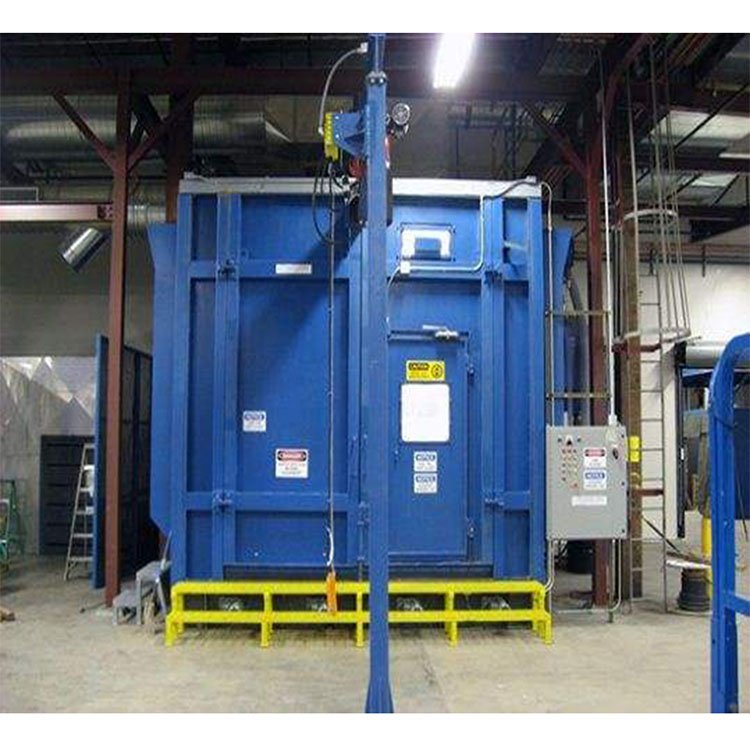
Sandblasting room cleaning: After daily shutdown, remove the residual abrasives and metal debris in the room body, and focus on cleaning the gaps in the ground grid to avoid blockage and affect the abrasive circulation efficiency.
Abrasive screening: Check the integrity of the separator screen. If it is damaged or deformed, it must be replaced immediately to prevent impurities from entering the spray gun and causing blockage.
Spray gun and nozzle: Check the wear of the nozzle inner diameter every day. If the wear exceeds one-tenth of the original size (for example, an 8 mm nozzle increases to 8.8 mm), it must be replaced in time to ensure stable sandblasting pressure.
Sealing status: Check whether the rubber sealing strips of the door and observation window of the observation room are aging and cracking, and repair or replace them in time to prevent dust from spilling out.
For key lubrication points such as chain conveyors and dust removal fan bearings, add high-temperature resistant grease (NLGI grade 2 is recommended) every week, and record the lubrication time and amount to avoid omission or excessive lubrication.
Clean the dust removal filter cartridge and use compressed air for pulse backwashing. The air pressure must reach the standard value and the single backwashing time must be controlled within a reasonable range. Check the wear of the elbows of the abrasive circulation pipeline. If the thickness is insufficient, it needs to be welded and reinforced.
Test the insulation performance of the electrical system to ensure that the insulation resistance value meets the safety standards. Verify the opening and closing pressure of the safety valve of the sandblasting tank pressure vessel. Calibrate when the error exceeds the standard.
Calibrate the dynamic balance of the fan impeller. If abnormal vibration is found, stop the machine for correction. Evaluate the abrasive inventory and replenish new abrasive in time when it is less than 30% of the design capacity.
Possible reasons: excessive moisture content of abrasive, nozzle wear or insufficient compressed air pressure.
Solution: Dry the abrasive to a safe moisture content, replace the nozzle and adjust the air compressor output pressure to the standard range.
Troubleshooting steps: Check whether the filter cartridge is hardened and whether the ash discharge valve is stuck.
Processing flow: Remove the filter cartridge and blow it in reverse, clean the ash discharge valve and lubricate the shaft.

Develop differentiated maintenance cycles and spare parts replacement plans based on customer production intensity (such as single shift or continuous operation).
Overseas warehouses in the United States, Mexico, Vietnam and other countries always have nozzles, filter cartridges, seals and other vulnerable parts, and deliver them within 48 hours for urgent needs.
Optional operation monitoring module, real-time collection of abrasive circulation, dust removal pressure difference and other data, automatic push maintenance warnings, and reduce unplanned downtime.